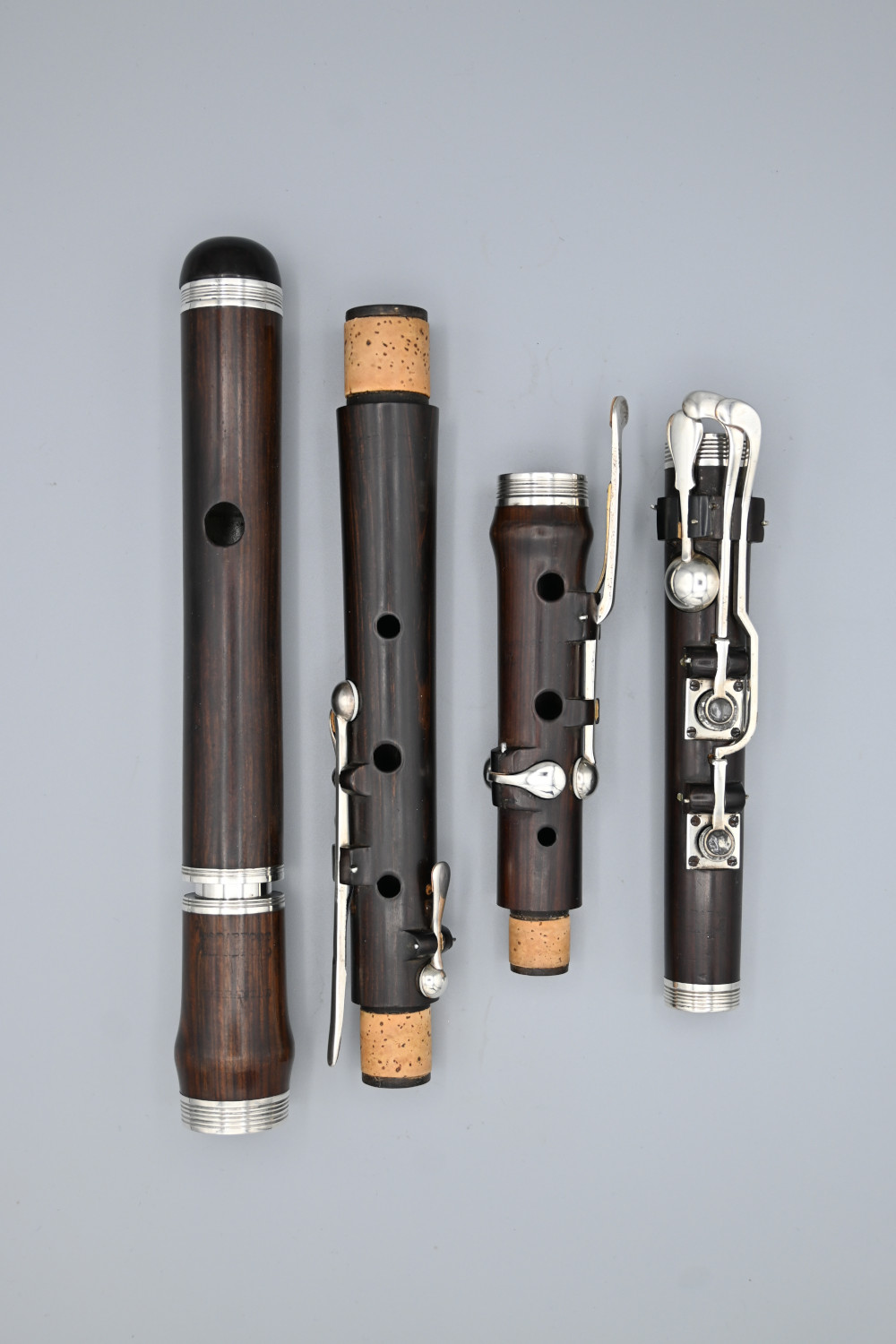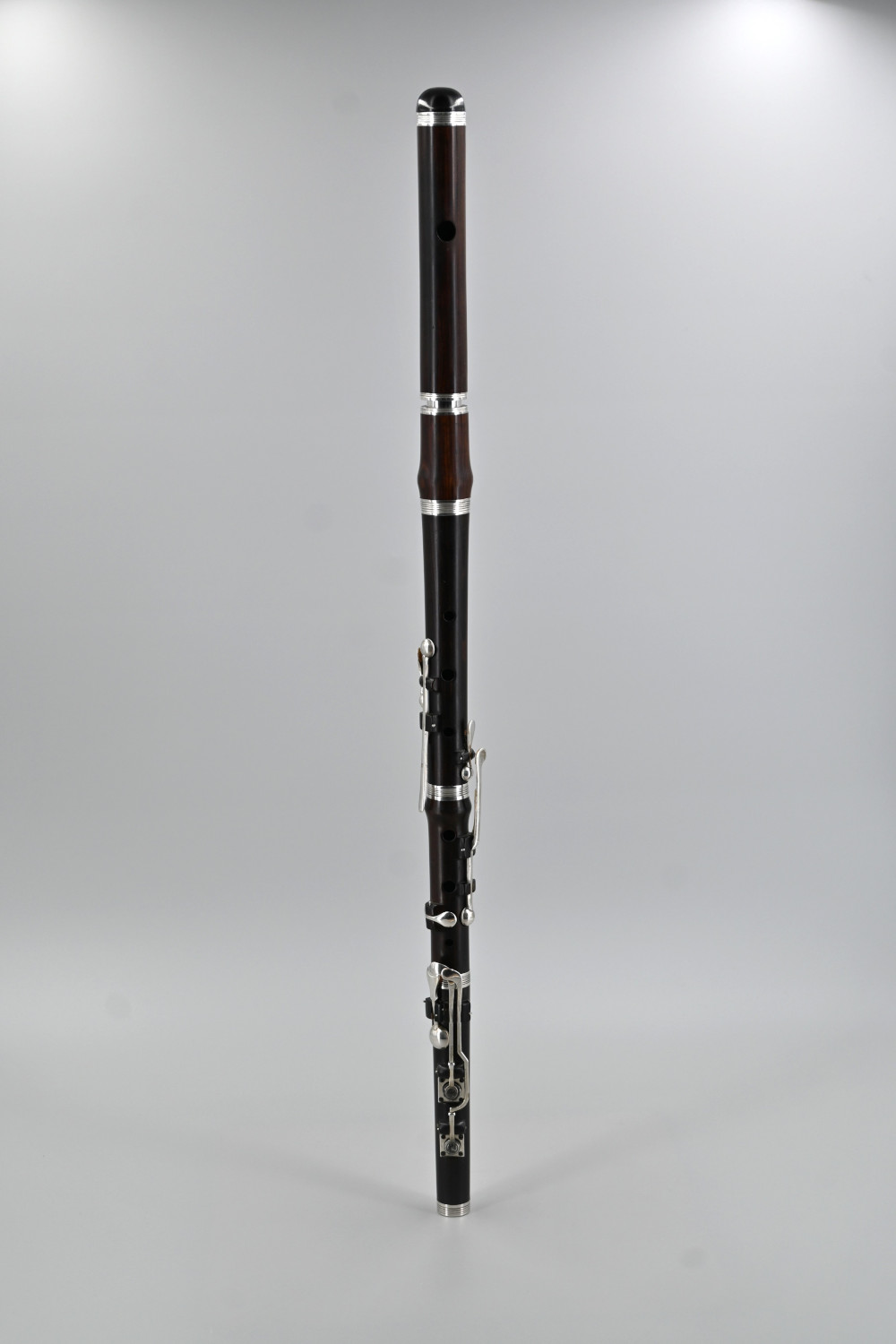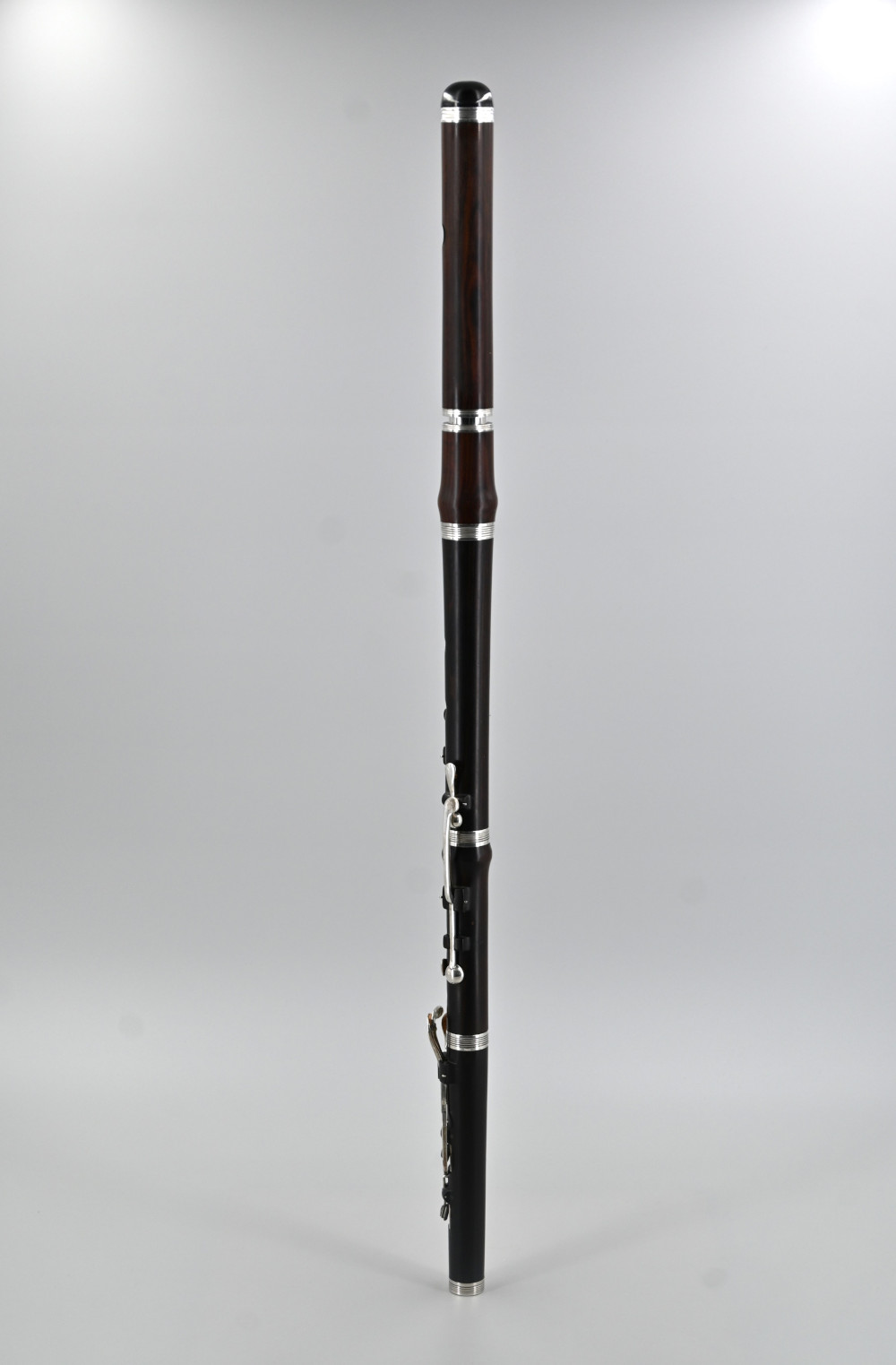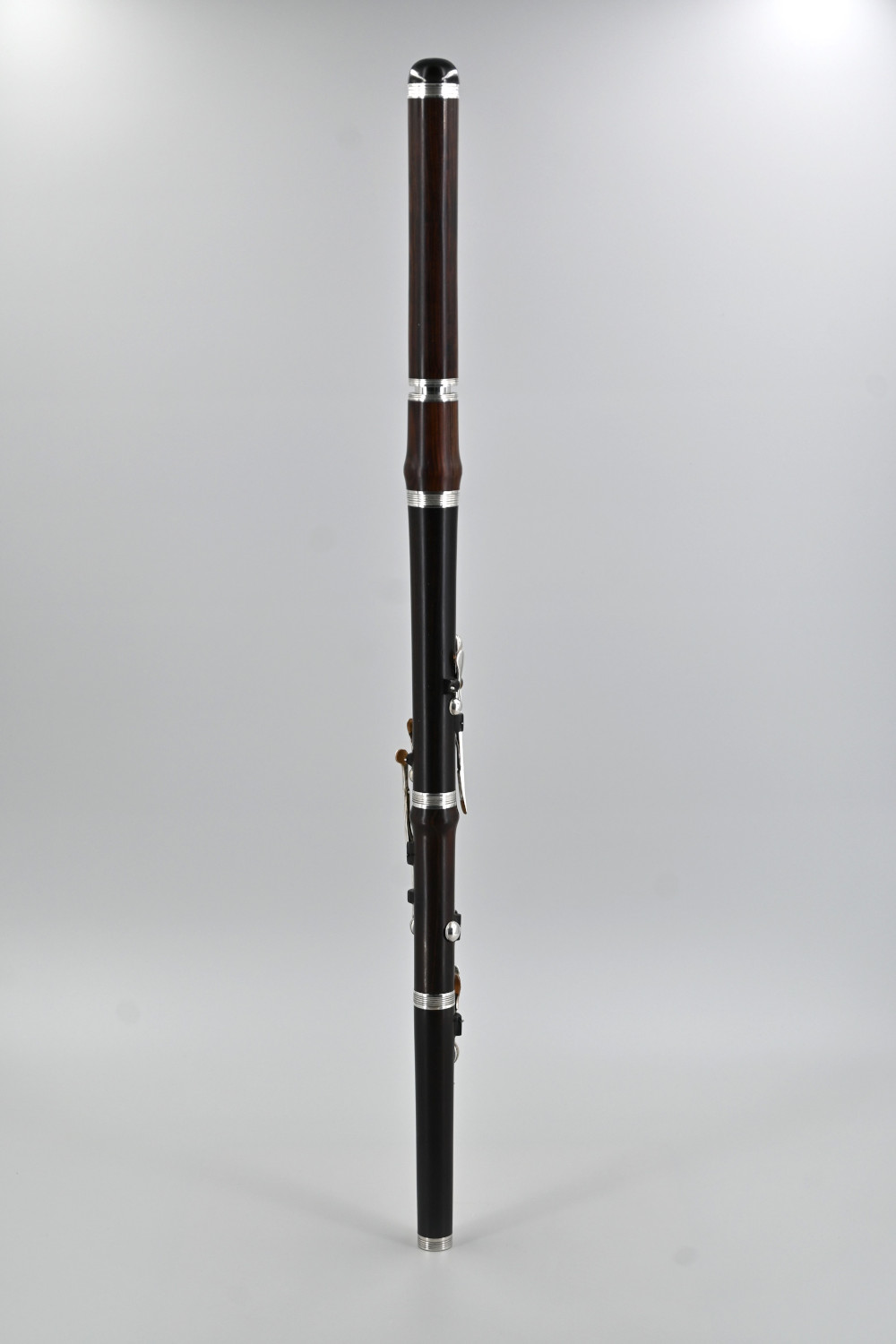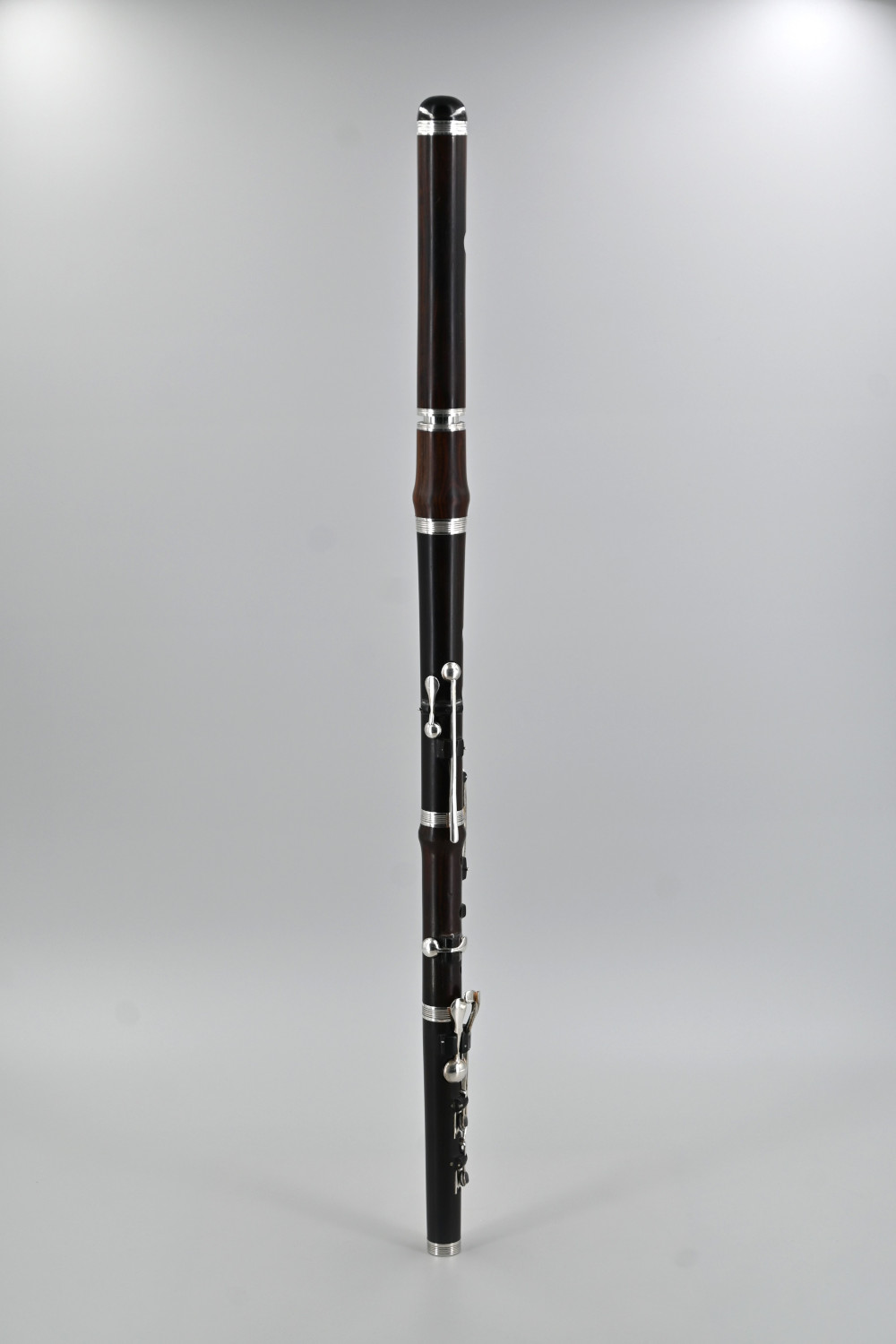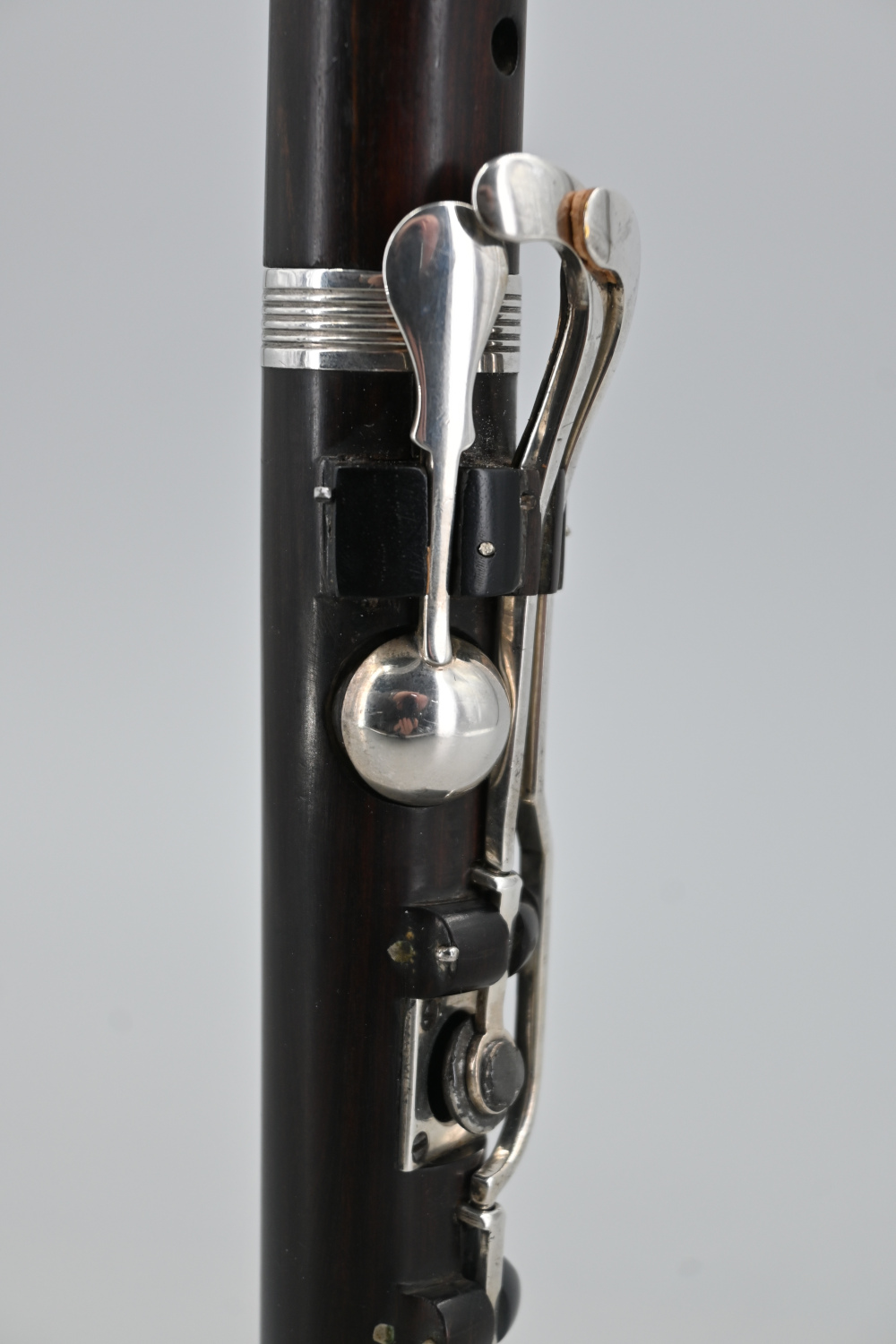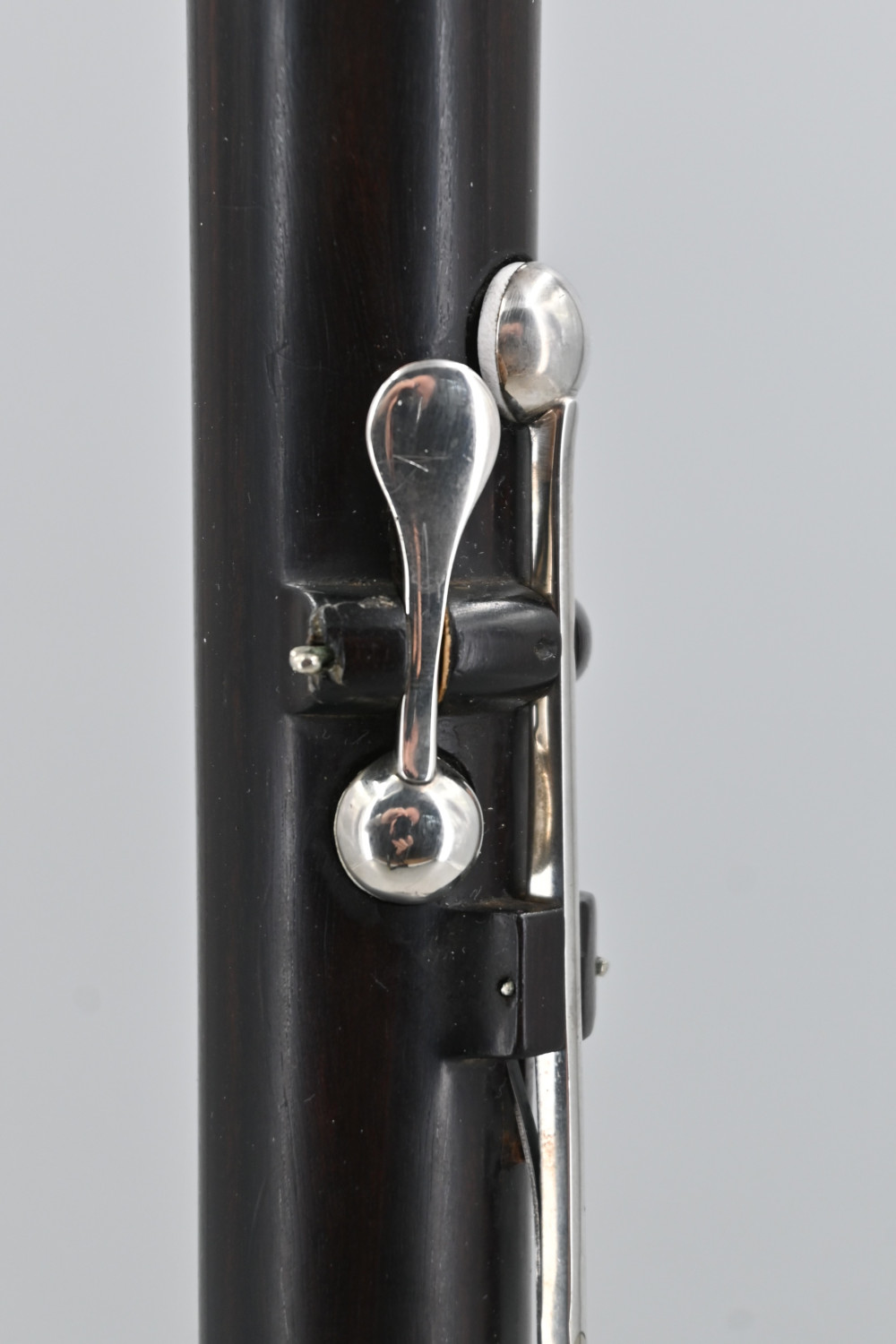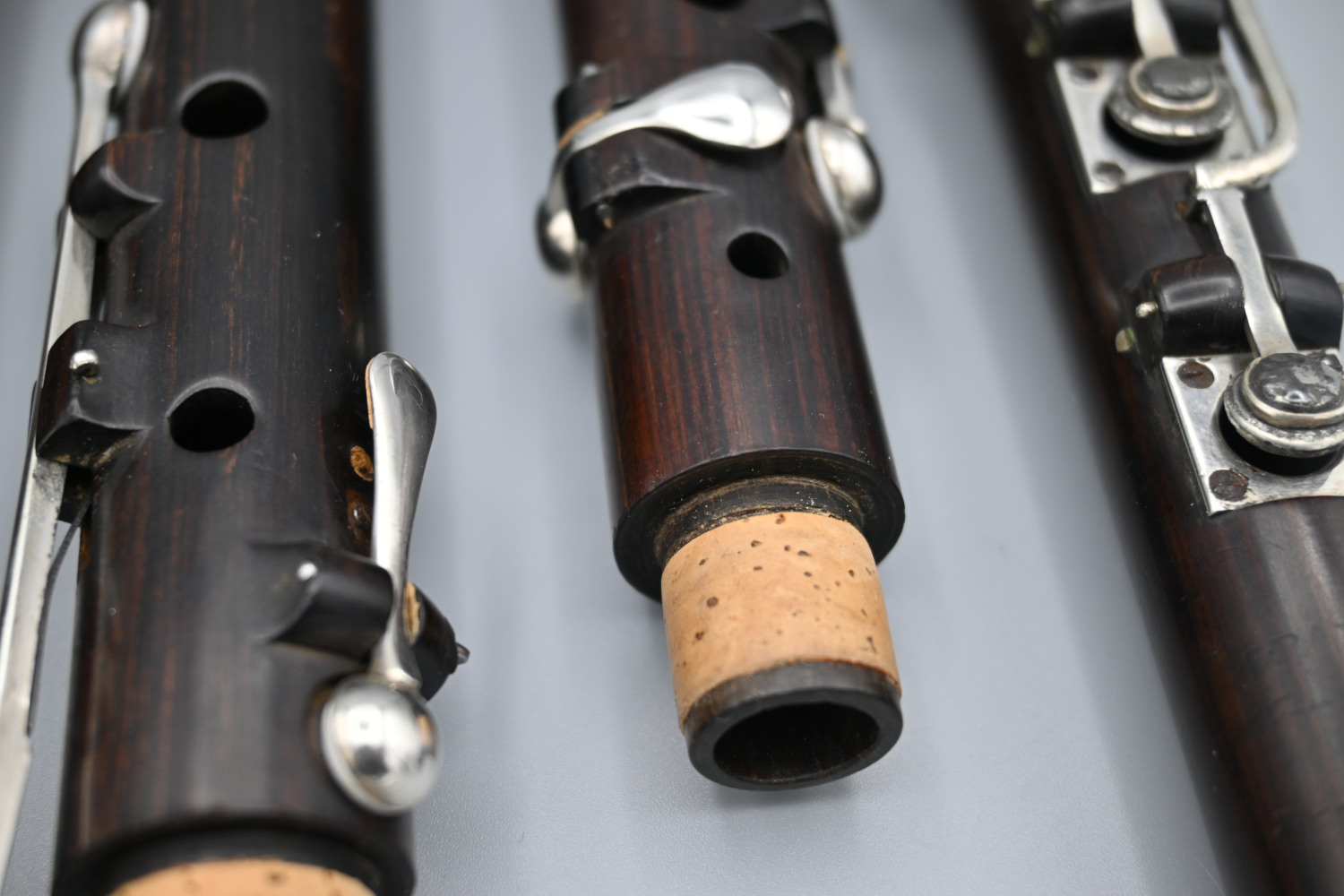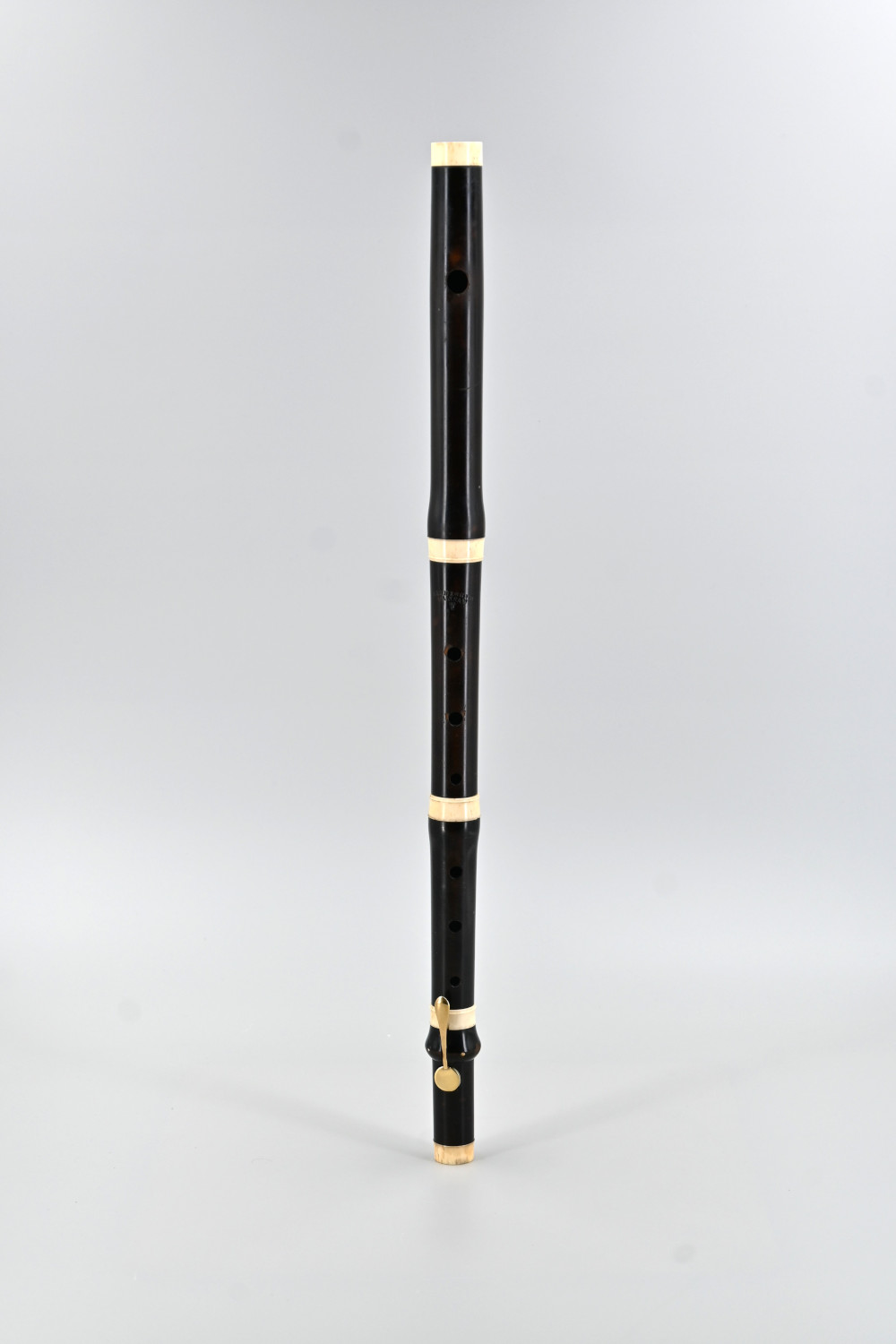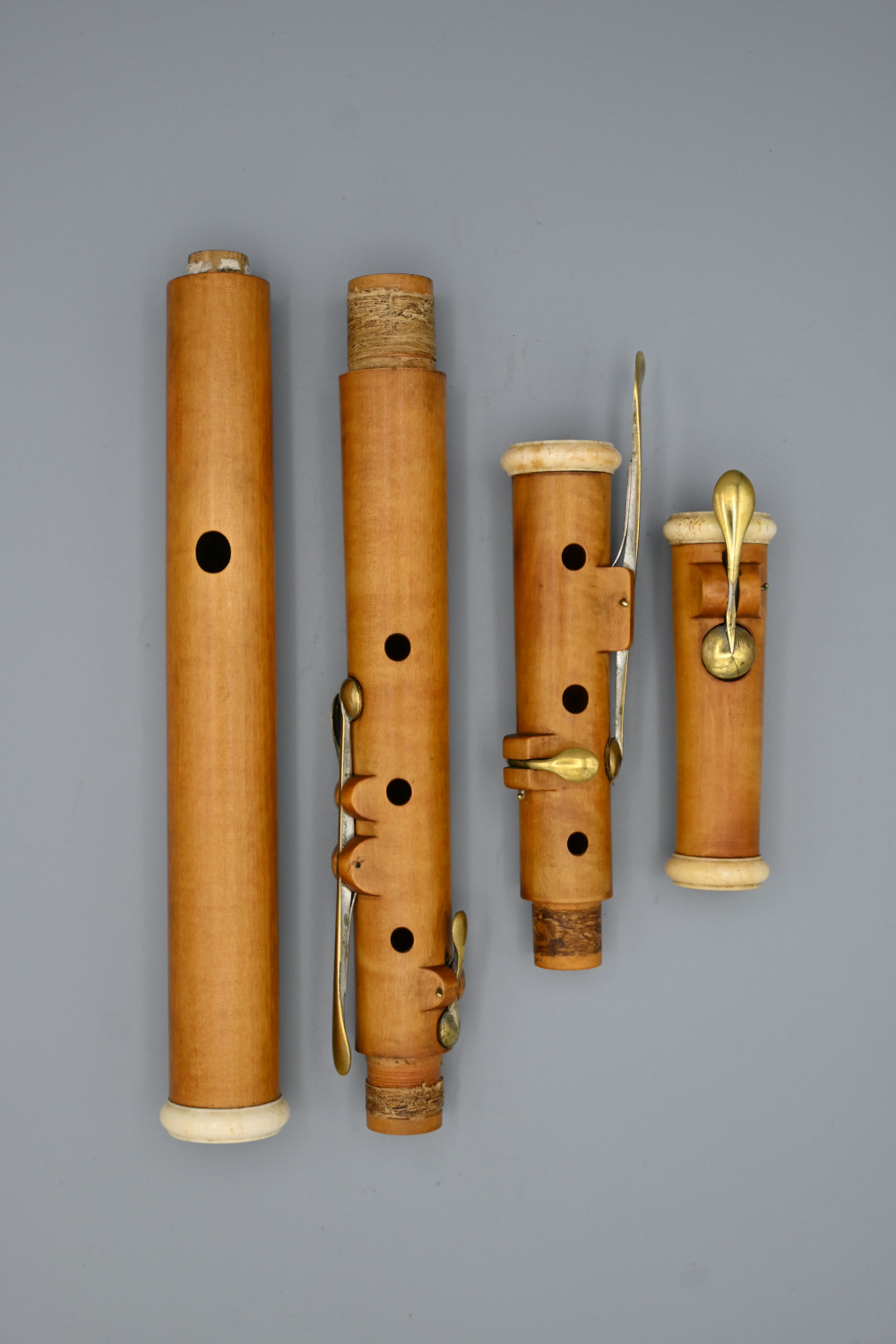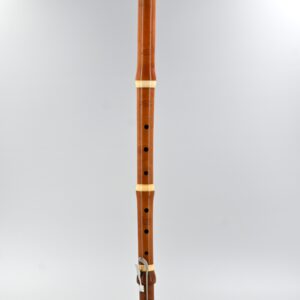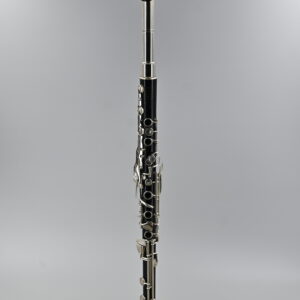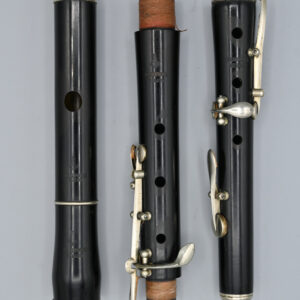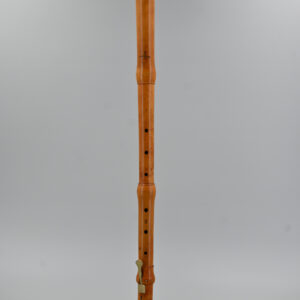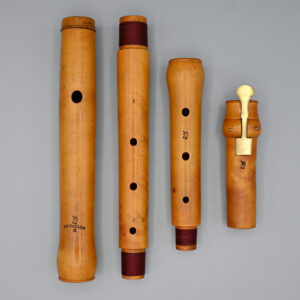Flute – BARFOOT, C.S.
1.250,00 €
| Category | Flutes |
| Maker | BARFOOT, C.S. |
| Marks and inscriptions | Barrel: C.S.BARFOOT/BLANDFORD/WARRANTED Left-hand and foot joint: C.S.BARFOOT/BLANDFORD |
| Period | 1830-1900 |
| Place of origin | England |
| Description | Eight-keyed cocuswood flute with silver keys and rings |
| Materials | Cocuswood , silver (unhallmarked) |
| Dimensions | Total length 679 mm Sounding length 596 mm Weight 420 g |
| Condition | Working condition |
| Special features | Elegantly decorated silver rings |
| Price (€) | €1,250.00 |
| Ref | 1086 |
- Description
- Enquiry
Description
Flute – BARFOOT, C.S.
This attractive flute is stamped C. S. BARFOOT, Blandford. C for Charles and S for Smith, makes Charles Smith Barfoot (1778-1843).
According to the Langwill Index, he was a music seller – well that’s exactly how he describes himself in his will. However, with a bit more digging, we discover that Charles Smith Barfoot was also a ‘Music Master’ or teacher who lived at White Cliff, Mill Street in Blandford. Blandford or Blandford Forum is a picturesque market town by the river Stour, in the county of Dorset, England. It seems that Charles Smith never married and when he died, he left a lump sum of money to two dressmaker sisters (Mary Ann and Sarah Elkins). Then his three brothers and one sister inherited the rest. We can therefore assume that he didn’t actually make this instrument… So, who did?
show more It could have been any of the London makers of that time. We know there is a clarinet in the Edinburgh University Collection with C.S. Barfoot stamps and a W. MILHOUSE / LONDON stamp too. In the Royal College of Music collection, there is another clarinet, but this has a unicorn stamp… Astor, Bilton, Cramer, Gerock, Key, Miller, Henry Potter and Wolf also used the unicorn stamp on their instruments. This flute is made of lovely, luscious cocuswood. All parts are stamped, but the cap is not original to the instrument. With the tuning slide pulled out by 4 mm, it plays nicely at a=440 Hz, with a bright sound. It features salt spoon keys mounted on wooden blocks. This type of key was found on instruments from the early 19th century onwards. The pewter plugs need some adjustment. This instrument was restored some time ago by its previous owner. In general, the flute is in good condition…waiting for a new home. show less










